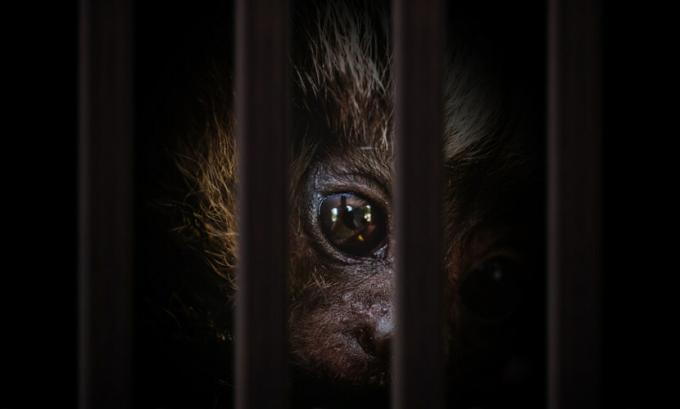You wild animals are those animals who are not used to the presence of human beings. They differ from animals such as dog, cat and horse because have not gone through the domestication process. Thus, they can react in different ways when removed from nature, even aggressively, since they are not used to the human presence.
Wild animals present difficulty living with human beings, how dogs and cats coexist. Cases where wild animals are not able, for example, to reproduce and if to feed in captivity.

Examples of wild animals
As we know, wild animals are not domesticated, so the list of these animals is long. As examples, we can mention the maned wolf, snakes, monkeys, bears, jaguars, toucan and the ocelot. In addition to the examples mentioned, we must highlight that animals such as parrots, tortoises and macaws, despite being raised by some people, are also wild animals.
Read too: Differences between wild and domestic animals
→ Wild animal trafficking
When we talk about wild animal trafficking, we are talking about the illegal trade in these animals, which are taken from nature and sold for various purposes, such as for collection and pet sales. shops. This illegal attitude involves a large amount of money, it is estimated that around 10 to 20 billion dollars are handled by traffickers annually.
Brazil occupies a prominent position when it comes to animal trafficking. This is due to the fact that traffickers see our country as a promising source of resources, since we have a largebiodiversity, being many species exclusive to our country.

Such as removal from nature and the sale of these animals are crimes in Brazil, traffickers use various techniques to ensure the transport of these animals. Many are doped and hidden in suitcases and boxes, for example, which commonly leads to their deaths. According to Renctas, a non-governmental organization that fights for the conservation of the biodiversity in our country, out of every 10 animals trafficked, 9 die even before reaching their home. final destination.
Law No. 5,197, of January 3, 1967, provides for the protection of fauna. According to article 1:
"Animals of any species, at any stage of their development and that live naturally outside captivity, constituting the wild fauna, as well as their nests, shelters and natural breeding sites are State property, and their use, pursuit, destruction, hunting or catch.”
These animals still suffer from the mistreatment that is necessary for their sale. Some birds, for example, have their wings clipped to prevent flight, other animals can have their claws clipped to prevent damage to their owners, among various other mutilations.
We realize, therefore, that it is a cruel and profit-oriented market. Traffickers are not concerned about the welfare of these animals or the fate they will receive. Therefore, even if a person intends to care for and love the trafficked animal, they should not be purchased. By purchasing an animal illegally, you contribute to this sad trade continuing to occur.
Wildlife trafficking is also responsible for negatively affecting the ecosystem from which this animal was taken. Often the exploitation of a particular species is so large that it ends up decimating the local population, affecting the balance of the ecosystem.
Read too: Endangered animals
→ Is it possible to buy wild animals legally?
We know that the commercialization of wild animals is considered a crime if these animals are removed from the wild. However, if the wild animal comes from a legalized breeding, the purchase can be made.

However, before purchasing a wild animal, it is essential to keep in mind that this animal is not domesticated, therefore, their interaction with humans is different from what is expected of domestic animals. It is not uncommon for people to regret the purchase and abandon these animals, which often die because they cannot survive in the new environment.
So remember: animal is not toy! This is true for both domestic and wild animals. Only purchase animals if you intend to love and care for them well. Also, don't forget that domestic animals are already used to interacting with humans, being the most sensible option when it comes to pets.

